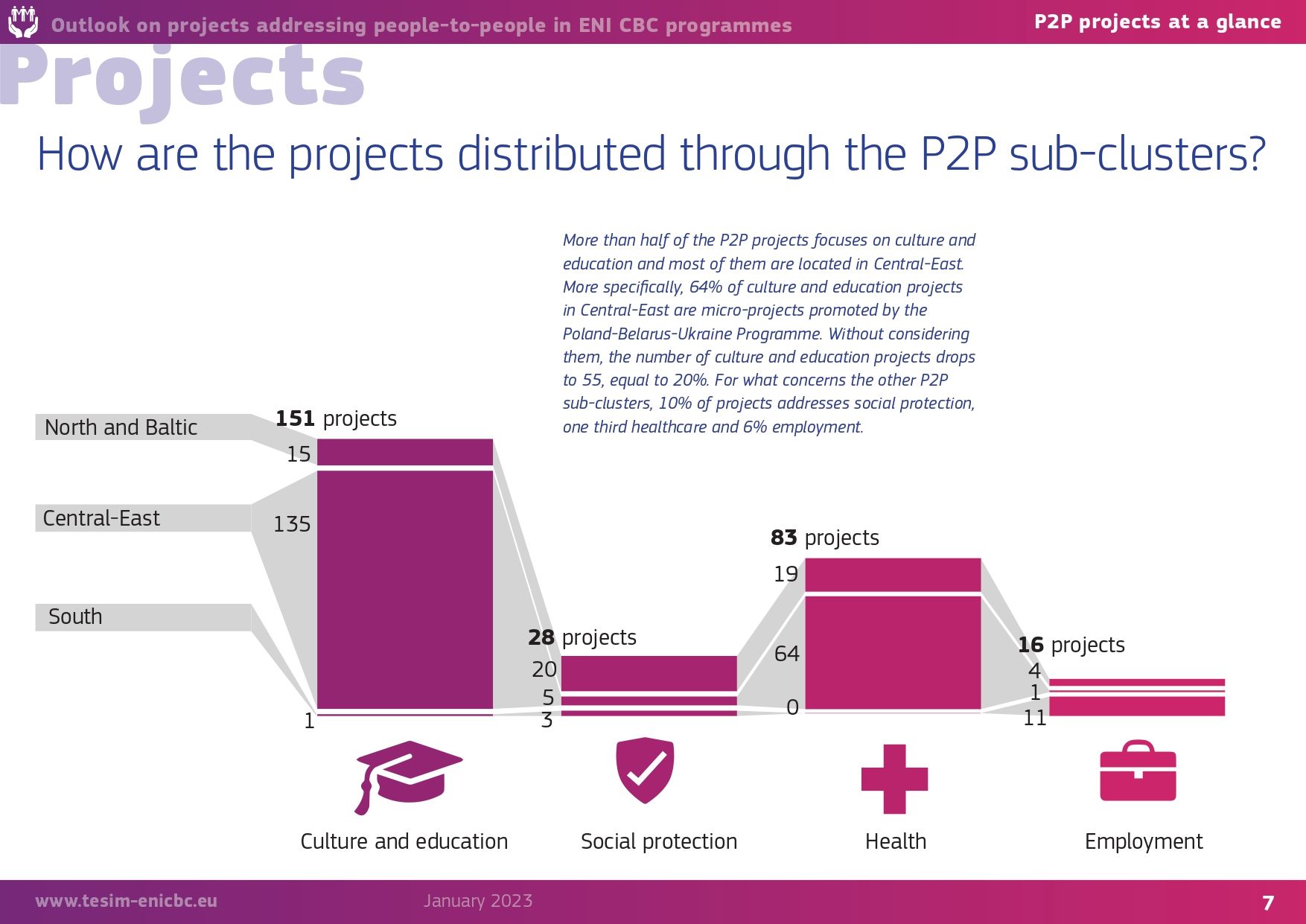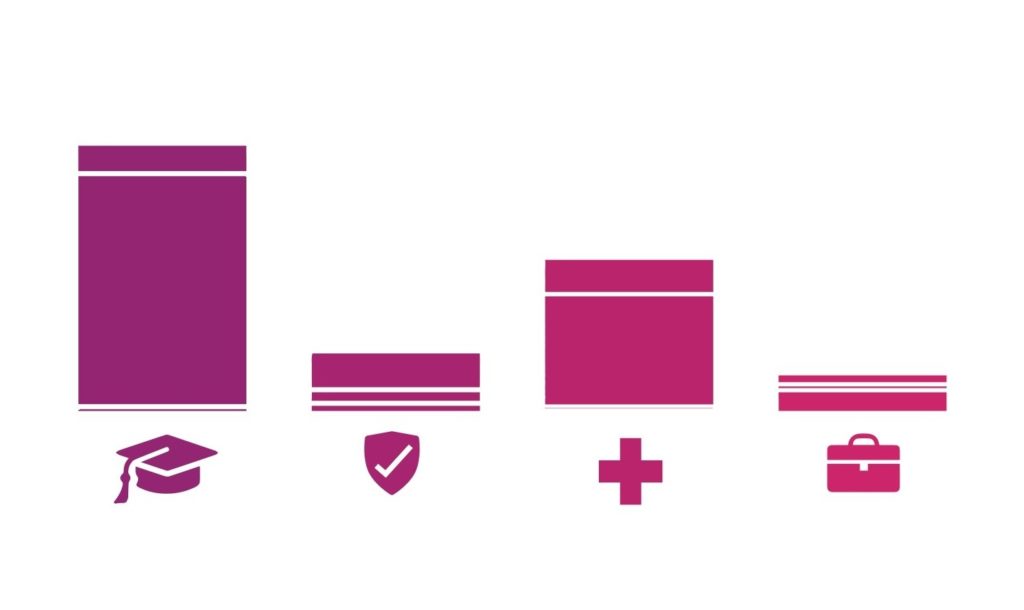Smaller, lighter, faster:
here the people-to-people projects
They score the average lowest budget and implementing time, and the highest number of micro initiatives: they are the people-to-people (P2P) projects, under the 2014-2020 European Neighbourhood Instrument (ENI CBC).

Following the general thematic outlook issued by TESIM in December 2022, the new publication highlighted today focuses on the 278 projects explicitly addressing P2P actions across the external European borders. They represent 30% of the total 915 ENI CBC projects financed until September 2022. How are they distributed across programmes, geographical areas and through sub-clusters? Which types of activities are implemented and how is the budget distributed? In which territories are they more widespread? These and many other questions are answered by graphs, infographic, maps.
Human and interpersonal relations constitute the key feature and the ultimate essence of European cooperation across the external borders. Still, the people-to-people element remains probably the most complex domain to be defined. Therefore, in this new publication, the multifaced components of the social dimension have been further analysed and grouped in four subclusters: culture and education, employment, health- social protection, and inclusion.
By processing data from our database, we learn for example that more than half of the P2P projects focus on culture and education, and most of them are implemented in the Central-East regions. On the other hand, employment is addressed by most of the projects in the South. Moreover, compared with the other thematic fields, among P2P activities there is a significantly higher quantity of micro-projects. And despite the large number of initiatives, this thematic domain engages less than 20% of the overall ENI CBC budget, with the lowest average project budget (0,8 M€). Health projects score the average highest budget with 1,07 M€, while culture and education activities achieve the lowest, equal to 430.000 €.
Globally, the P2P sector involves over 860 entities, especially regional and local authorities, civil society organisations and educational and research institutions. They constitute 24% of all the organisations involved in ENI CBC.
The P2P actions under ENI CBC spread along the terrestrial borders of the EU, with a certain concentration in the East, except for actions bridging the digital and gender gap and addressing young people not in education, employment, or training (NEET) on the Southern shores. The average time needed to implement a P2P project is 22 months, lower than the 26 needed when considering all ENI CBC projects.
One third of all the P2P projects involves young people as final beneficiaries or target group, most of them addressing actions under culture and education, health, and employment.
At the end, the document analyses the consistency of the ENI CBC projects with the next programming period, proving a high level of coherence and continuity with the 2021-2027 objectives. The P2P component – converging into the second Policy Objective aiming at “A more social Europe and its neighbourhood” – proves to be the most covered, attracting especially projects under culture and sustainable tourism (specific objective 4.6) and health care and health systems (specific objective 4.5)
We hope we have stimulated your interest, and we take the opportunity to announce that another publication is in the pipeline, dedicated to exploring the environmental dimension of ENI CBC projects. Stay tuned!
Our new publication: Tesim_P2P_outlook_publication Or you can always find it in our Library.
